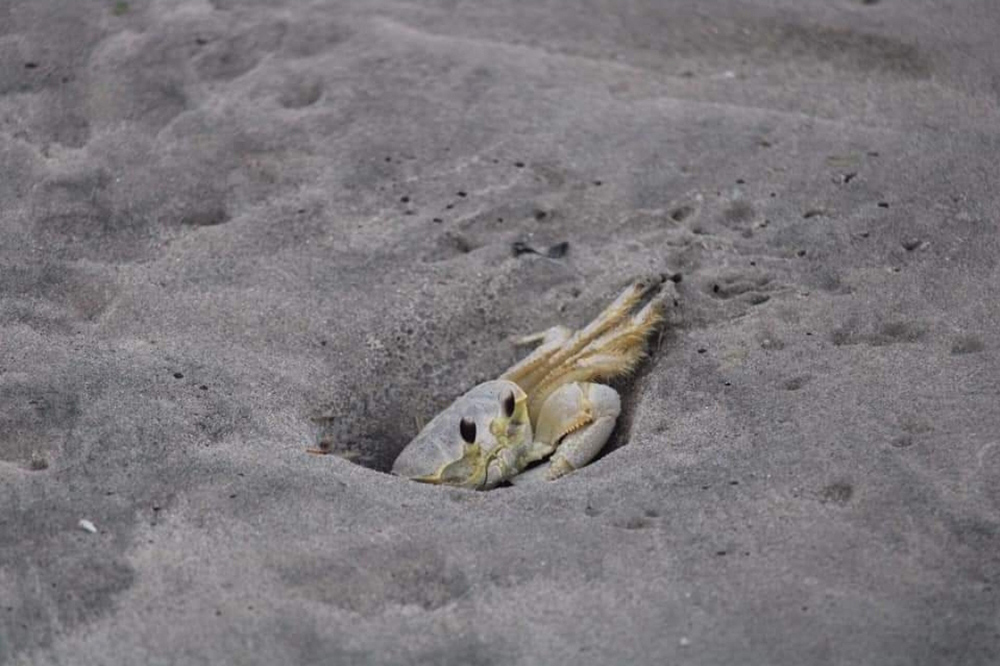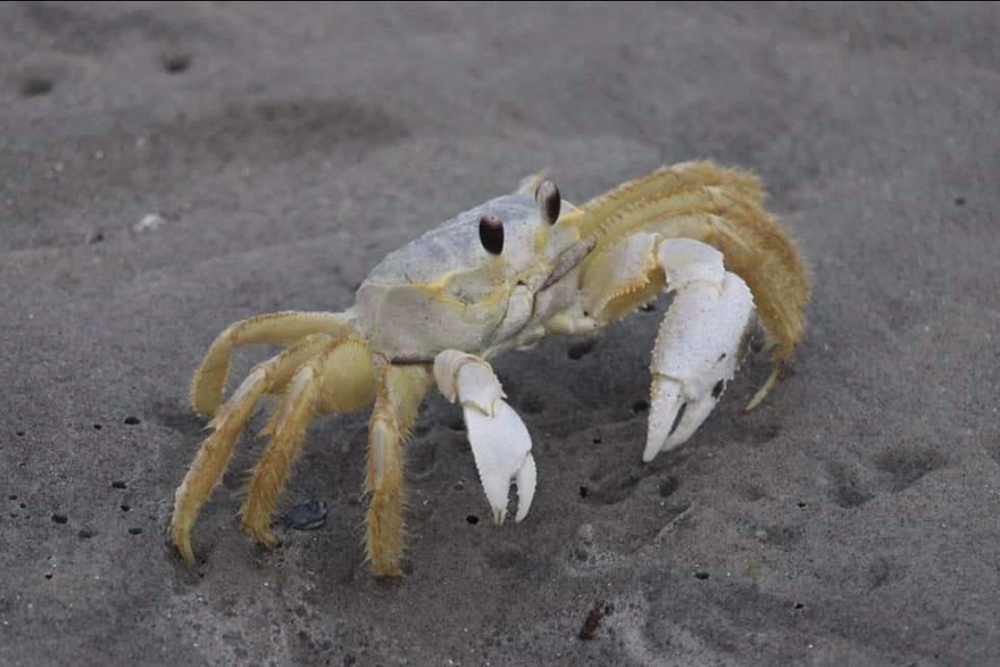By Steffen Klenk
If you go out for an early morning walk along the beach, you might see these creatures crawling out of the sand. They can be found moving quickly into tiny holes as we pass during the light of day. It is at night when their movements are most active. While ghost crabs might sound scary to some people, these sea scavengers are a popular resident of our coastal sands.
The Atlantic Ghost Crab is the species most commonly found in our region. They dominate beaches everywhere from Rhode Island to the South, extending into the farthest reaches of Brazil. Ghost crabs are generally small. At a size of only three inches in width, their quick and sudden movements make them transparent in the light of day. However, their large, elongated eyes are what make these quick-footed crustaceans stand out.
Fun fact: the Latin name for ghost crabs, Ocypode, mean “swift-footed.” They can move really fast if need be!
While Ghost Crabs are frequently spotted during daylight hours, they are relatively nocturnal creatures. They enjoy feeding on small insects, clams and mole crabs. Often times, they like to forage on vegetation and detritus. But, like all sea creatures, they do have several predators. Seagulls and other shorebirds will feed on these small crustaceans.
To protect themselves from unwanted predators, and to get much needed relief from the hot sun, ghost crabs will dig burrows in the sand. Holes are often dug up to four feet deep, and over 100 feet from water’s edge, far enough away from incoming tides. They will also hibernate deep into these holes during the winter, away from the harshest of winds. You may often find younger ghost crabs burrow closer to the ocean, while their older relatives stay higher up in the sand.

Do you know that ghost crabs can make noise? While these tiny crustaceans are not as loud as seagulls or other shorebirds, they have the ability to strike the ground with their claws. They can also make bubbling sounds and rub their legs together to attract attention, much like crickets do.
Here’s an interesting fact: ghost crabs can create sounds with their stomachs to ward off predators. In 2019, researchers discovered that these crustaceans have a set of three teeth, two laterals and one medial. The teeth rub against one another to create this unique phenomenon.
While it is almost impossible for a human to hear these creatures stomping their feet amongst crashing waves, they are surely visible to the naked eye. While ghost crabs might sound intimidating, fear not. These tiny creatures will move swiftly away along your journey. They will only pinch if they feel threatened or harmed. So enjoy the sand and the surf during your summer vacation.
Steffen Klenk is a multimedia journalist. He resides in Ocean City and enjoys capturing the eclectic moments of shore life.






